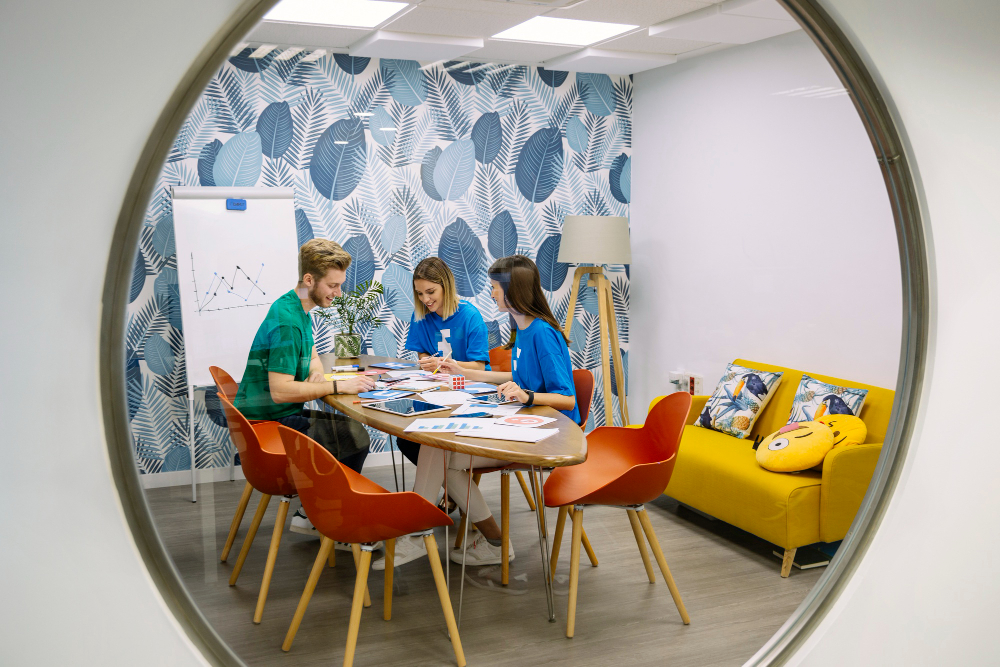The Art of Place Making: Transforming Spaces into Vibrant Communities
- February 28, 2024
- 3 min

In today’s fast-paced world, place-making has gained significant momentum, reshaping how we think about our urban environments. At its core, place making is about more than just physical transformations; it’s about fostering connections, enhancing the quality of life, and creating spaces that resonate with the essence of community living. This fascinating approach to urban design invites us to reimagine our public spaces as vibrant, engaging, and inclusive areas where people can come together, share experiences, and build lasting memories. This blog post will dive into the essence of place making, explore its principles, and highlight some inspiring examples illustrating how this practice breathes new life into our cities.
Understanding Place Making
Place making is a dynamic and collaborative process that involves designing and managing public spaces to strengthen the connection between people and the places they share. Unlike traditional urban planning, place making focuses on the human experience, prioritizing social interactions and community engagement over mere aesthetics or functionality. It’s about creating places that are not only visually appealing but also accessible, usable, and enjoyable for all members of the community.
Principles of Place Making
Several fundamental principles underpin the practice of place making. First and foremost, it champions the idea of community involvement. By engaging local residents in the planning process, place making ensures that the results reflect the needs, desires, and aspirations of those who will use the space most. Furthermore, it emphasizes the importance of versatility, designing spaces that can host various activities and cater to diverse groups of people. Safety, accessibility, and sustainability are also central to place making, as these elements contribute to public spaces’ long-term success and vibrancy.
Examples of Place Making in Action
Transforming Parks into Community Hubs
One of the most visible forms of place making is the transformation of underutilized parks into bustling community hubs. Adding amenities such as playgrounds, picnic areas, performance stages, and community gardens are converted into places where people of all ages can gather, play, and relax. The revitalization of these areas enhances their aesthetic appeal and promotes physical activity, social interaction, and a sense of community belonging.
Revitalizing Streets and Public Plazas
Another example of place making is the revitalization of streets and public plazas. This can involve pedestrianizing areas, adding street furniture, creating bike lanes, and incorporating public art. Such changes make these spaces more inviting and functional for pedestrians and cyclists, encouraging more people to use them for leisure and transportation. Introducing cafes, markets, and cultural events can further animate these spaces, turning them into lively centers of community life.
Creating Pop-Up Spaces
Place making also embraces the concept of temporary or “pop-up” spaces. These include temporary parks and outdoor cinemas, pop-up shops and street festivals. Pop-up spaces are a great way to test new ideas and bring energy and innovation to underused or overlooked areas. They provide a platform for community engagement and creativity, often leading to permanent improvements based on what works best in a given context.
Integrating Art and Culture
Incorporating art and cultural elements is a powerful aspect of place making. Public art installations, murals, sculptures, and performance spaces beautify urban areas and reflect and celebrate local heritage and diversity. These artistic interventions can transform mundane spaces into inspiring and thought-provoking places that draw people together and spark conversations.
The Impact of Place Making
The impact of place making on urban environments and communities is profound. By fostering more livable, attractive, and engaging public spaces, place making improves the quality of urban life. It encourages healthier lifestyles, boosts local economies, and strengthens community bonds. Moreover, it empowers residents by giving them a voice in the development of their neighborhoods, leading to more resilient and cohesive communities.
The Future of Place Making
As we look to the future, place-making’s role in shaping our urban environments is undeniable. It offers a flexible, participatory approach to urban design that prioritizes human needs and aspirations. By continuing to embrace and innovate within the practice of place making, we can ensure that our cities remain vibrant, inclusive, and dynamic places where communities thrive.
In conclusion, place making is more than just a trend in urban development; it’s a fundamental shift in how we envision and create public spaces. It challenges us to think beyond the physical structures and consider the social, cultural, and emotional layers that make a place genuinely alive. As we move forward, the principles of place making will undoubtedly play a crucial role in crafting the cities of tomorrow, where every space reflects the community it serves. Through collaboration, creativity, and a deep commitment to inclusivity, we can transform our urban environments into places where every individual feels valued, connected, and inspired.
Read More:
Strengthening Communities
About Phil Myrick
Phil Myrick is an advisor to planning and development projects around the world and former CEO of Project for Public Spaces. Phil applies research into how people interact with their environments and each other to create vibrant places, destinations, districts, and developments. His strategic advice has helped his clients achieve their goals of attracting people, engaging people in their community, strengthening connections and social fabric, and stimulating economic development. Phil is married with two teenagers and struggles to satisfy his passion for being outdoors or on the water. https://philmyrick.com
